The Book of Exodus is the second book of the Bible. It is a narrative of the Exodus, the origin myth of the Israelites leaving slavery in Biblical Egypt through the strength of their deity named Yahweh, who according to the story chose them as his people. The Israelites then journey with the legendary prophet Moses to Mount Sinai, where Yahweh gives the Ten Commandments and they enter into a covenant with Yahweh, who promises to make them a "holy nation, and a kingdom of priests" on condition of their faithfulness. He gives them their laws and instructions to build the Tabernacle, the means by which he will come from heaven and dwell with them and lead them in a holy war to conquer Canaan, which has earlier, according to the myth of Genesis, been promised to the "seed" of Abraham, the legendary patriarch of the Israelites.

Passover, also called Pesach, is a major Jewish holiday and one of the Three Pilgrimage Festivals. It celebrates the Exodus of the Israelites from slavery in Egypt.

Aaron's rod refers to any of the walking sticks carried by Moses' brother, Aaron, in the Torah. The Bible tells how, along with Moses's rod, Aaron's rod was endowed with miraculous power during the Plagues of Egypt that preceded the Exodus. Later, his rod miraculously sprouted blossoms and almonds to symbolize God's choice of Aaron and his tribe for holy service.
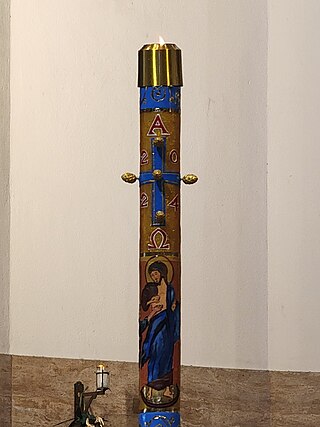
A Paschal candle is a large candle used in liturgies in Western Christianity. A new Paschal candle is blessed and lit every year at Easter. It is used throughout the Eastertide and then throughout the year on occasions such as baptisms, funerals and some other special occasions such as the ordination of priests, taking vows or the Consecration of virgins, when the fire from the Paschal candle is carried with a wick to light another liturgical candle, as for example the baptismal candle.

Pio of Pietrelcina, widely known as Padre Pio, was an Italian Capuchin friar, priest, stigmatist, and mystic. He is venerated as a saint in the Catholic Church, celebrated on 23 September.
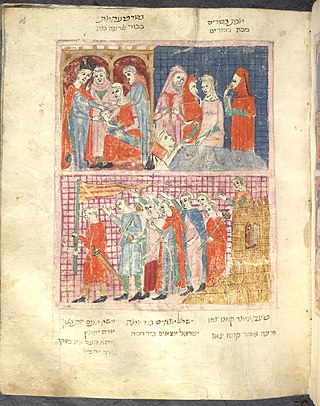
In the Book of Exodus, the Plagues of Egypt are ten disasters that Yahweh inflicts on the Egyptians to convince the Pharaoh to emancipate the enslaved Israelites, each of them confronting the Pharaoh and one of his Egyptian gods; they serve as "signs and marvels" given by Yahweh in response to the Pharaoh's taunt that he does not know Yahweh: "The Egyptians shall know that I am the LORD". These Plagues are recited by Jews during the Passover Seder.

The Presentation of Jesus is an early episode in the life of Jesus Christ, describing his presentation at the Temple in Jerusalem. It is celebrated by many churches 40 days after Christmas on Candlemas, or the "Feast of the Presentation of Jesus". The episode is described in chapter 2 of the Gospel of Luke in the New Testament. Within the account, "Luke's narration of the Presentation in the Temple combines the purification rite with the Jewish ceremony of the redemption of the firstborn ."
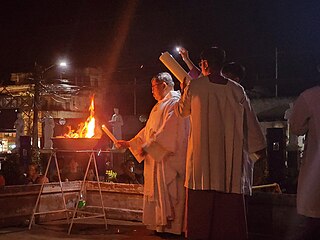
The Easter Vigil, also called the Paschal Vigil, the Great Vigil of Easter, or Holy Saturday at the Easter Vigil on the Holy Night of Easter is a liturgy held in traditional Christian churches as the first official celebration of the Resurrection of Jesus. Historically, it is during this liturgy that people are baptized and that adult catechumens are received into full communion with the Church. It is held in the hours of darkness between sunset on Holy Saturday and sunrise on Easter Day – most commonly in the evening of Holy Saturday or midnight – and is the first celebration of Easter, days traditionally being considered to begin at sunset.

"The Day of the LORD” is a biblical term and theme used in both the Hebrew Bible and the New Testament, as in "The sun shall be turned into darkness, and the moon into blood, before the great and the terrible day of the LORD come".

The Exodus is the founding myth of the Israelites whose narrative is spread over four of the five books of the Pentateuch. The narrative of the Exodus describes a history of Egyptian bondage of the Israelites followed by their exodus from Egypt through a passage in the Red Sea, in pursuit of the Promised Land under the leadership of Moses.
Bible prophecy or biblical prophecy comprises the passages of the Bible that are claimed to reflect communications from God to humans through prophets. Christians usually consider the biblical prophets to have received revelations from God.
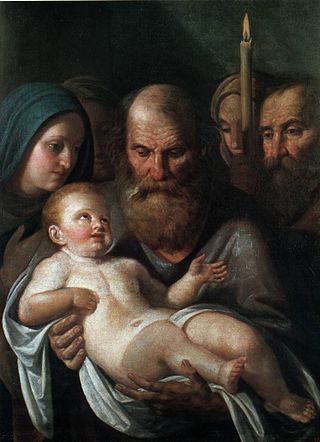
Simeon at the Temple is the "just and devout" man of Jerusalem who, according to Luke 2:25–35, met Mary, Joseph, and Jesus as they entered the Temple to fulfill the requirements of the Law of Moses on the 40th day from Jesus' birth, i.e. the presentation of Jesus at the Temple.
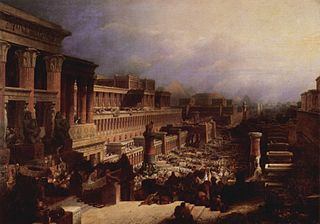
Bo is the fifteenth weekly Torah portion in the annual Jewish cycle of Torah reading and the third in the book of Exodus. The parashah constitutes Exodus 10:1–13:16. The parashah tells of the last three plagues on Egypt and the first Passover.
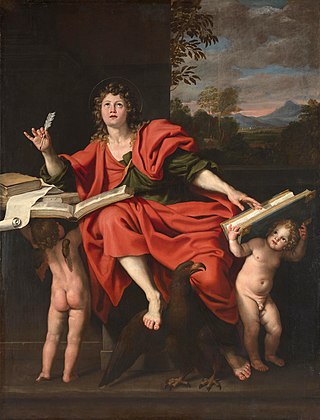
The events of Revelation are the events that occur in the Book of Revelation of the New Testament. An outline follows below, chapter by chapter.

The Seventh-day Adventist Church holds a unique system of eschatological beliefs. Adventist eschatology, which is based on a historicist interpretation of prophecy, is characterised principally by the premillennial Second Coming of Christ. Traditionally, the church has taught that the Second Coming will be preceded by a global crisis with the Sabbath as a central issue. At Jesus' return, the righteous will be taken to heaven for one thousand years. After the millennium the unsaved cease to exist as they will be punished by annihilation while the saved will live on a recreated Earth for eternity.
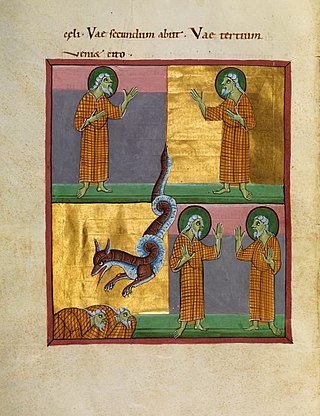
The two witnesses are two literary figures who are mentioned in Revelation 11:1-14. Some Christians interpret this as two literal people, such as Moses and Elijah or Saint Peter and Paul the Apostle. Others interpret this as a symbol for a group or groups of people, such as the Christian church or the Jews and the Christians. Still others interpret this as a symbol of two concepts, such as the Torah and Nevi’im or the Old Testament and New Testament. The earliest interpretation of the two witnesses is that they are Enoch and Elijah, the only two that did not see death as required by the Scriptures. Hippolytus of Rome is the first commentator to unambiguously present this view.

The Biblical character Moses, who led the Israelites out of Egypt and through their wanderings in the wilderness, is discussed extensively in rabbinic literature. Such literature and commentaries contain various expansions, elaborations, and inferences beyond what is presented in the Bible itself.
In the Exodus narrative, Yam Suph or Red Sea, sometimes translated as Sea of Reeds, is the body of water which the Israelites are said to have crossed in the story of their exodus from Egypt. The same phrase appears in over 20 other places in the Hebrew Bible. This has traditionally been interpreted as referring to the Red Sea, following the Greek Septuagint's rendering of the phrase. However the appropriate translation of the phrase remains a matter of dispute; as does the exact location referred to.
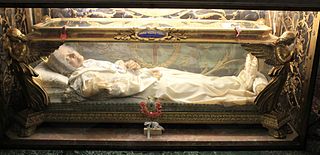
Anna Maria Taigi was an Italian Catholic professed member from the Secular Trinitarians. Taigi reportedly experienced a series of ecstasies during her life and heard the voices of God and Jesus Christ on several occasions.
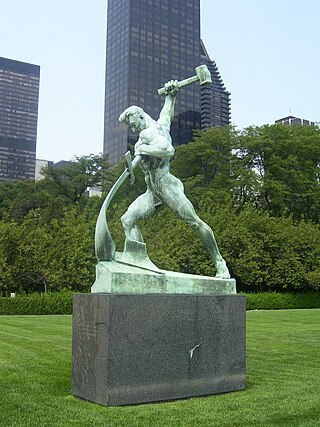
According to classical Jewish sources, the Hebrew year 6000 marks the latest time for the initiation of the Messianic Age. The Talmud, Midrash, and Zohar specify that the date by which the Messiah will appear is 6,000 years from creation.
















